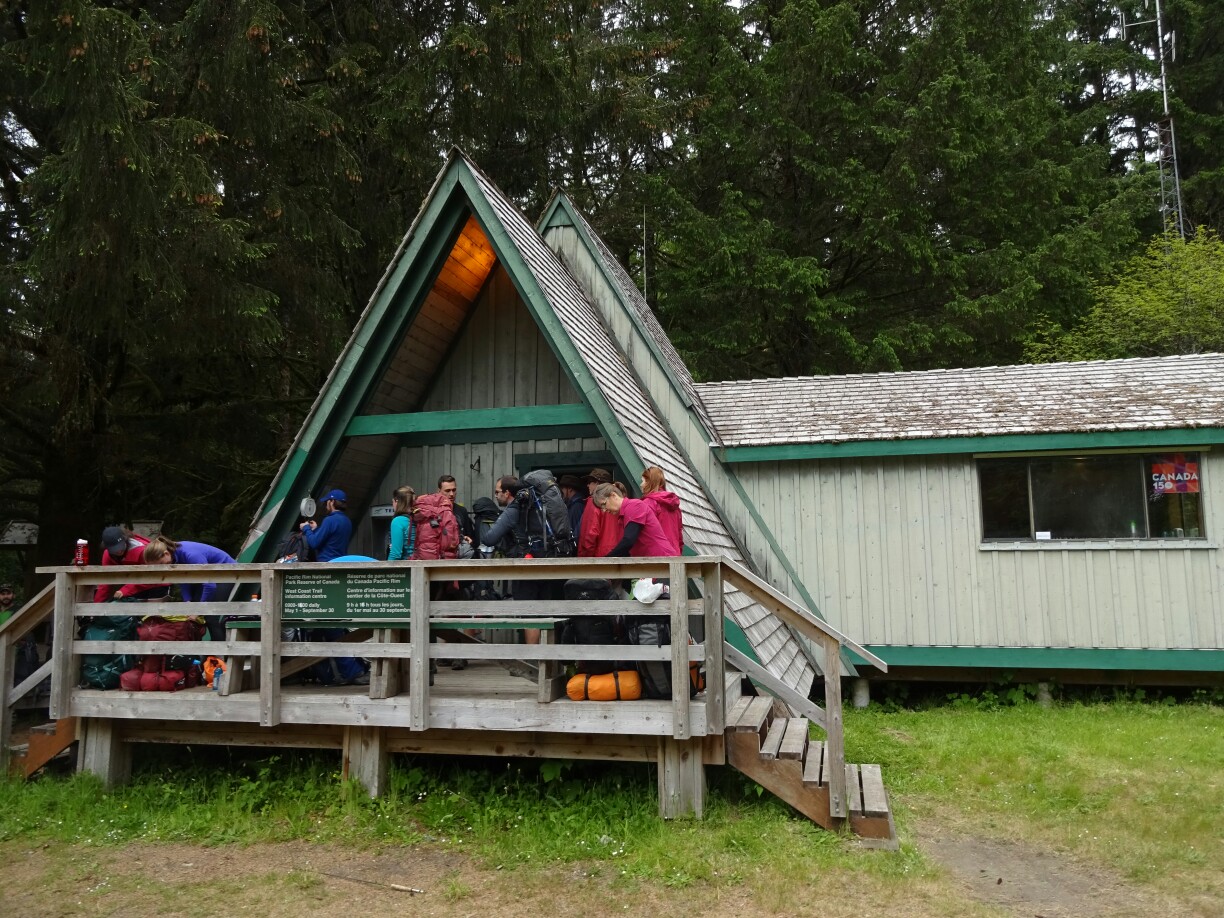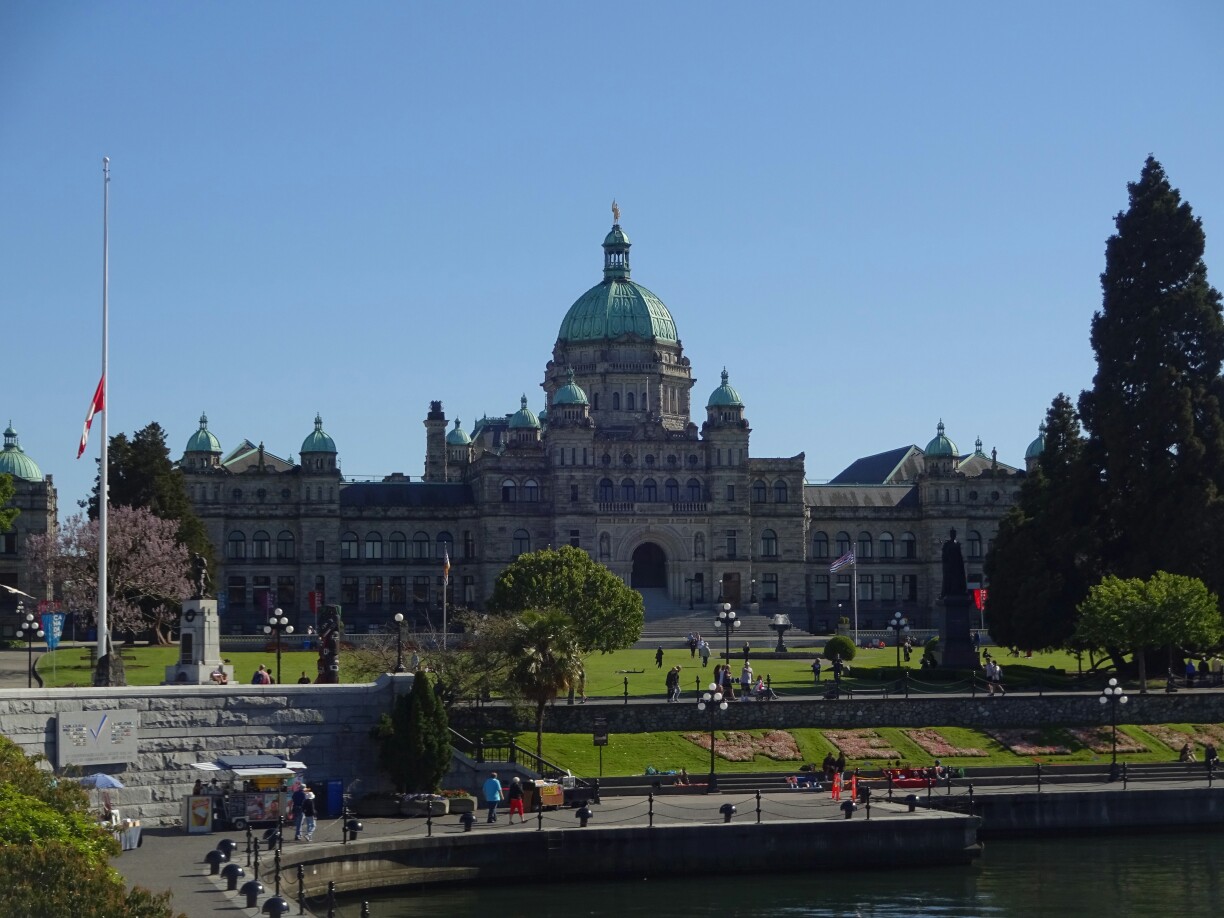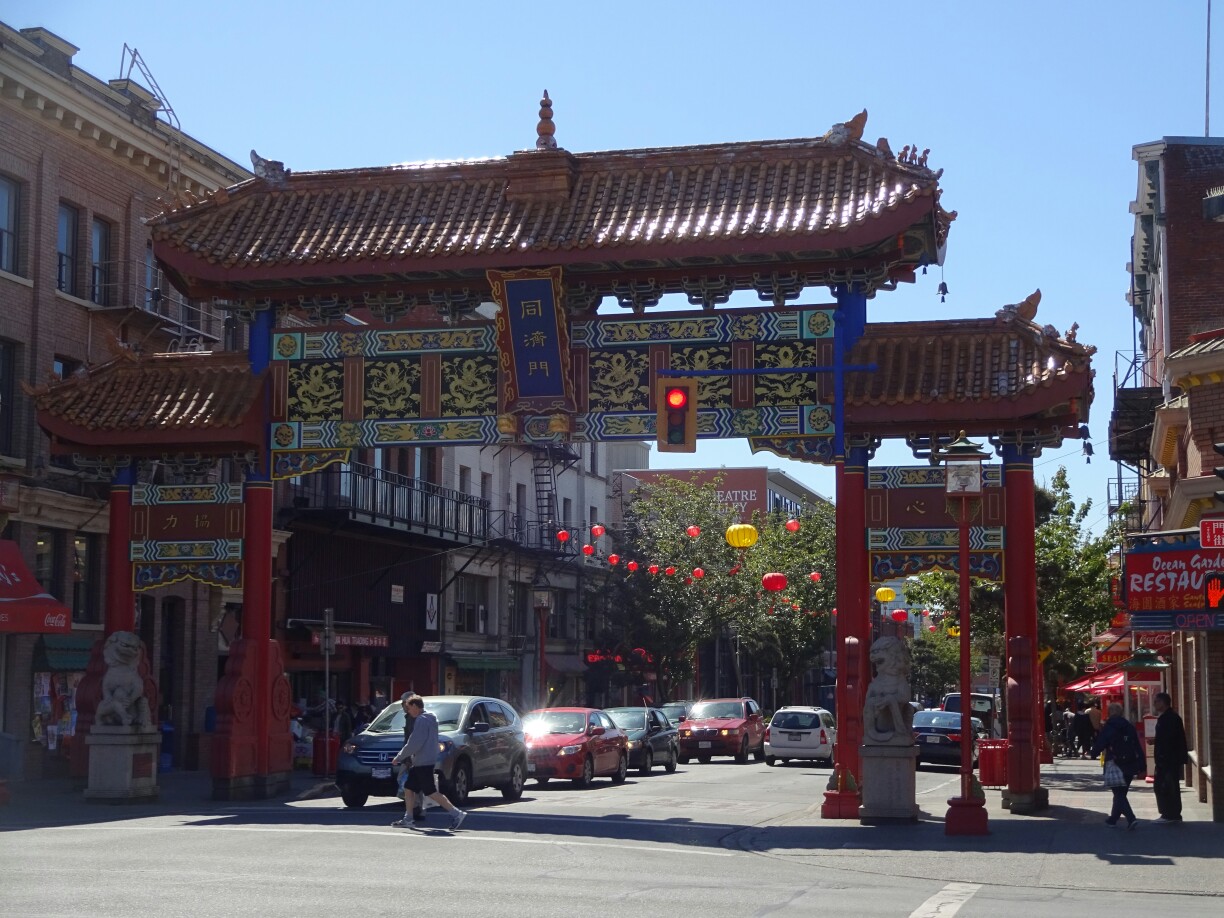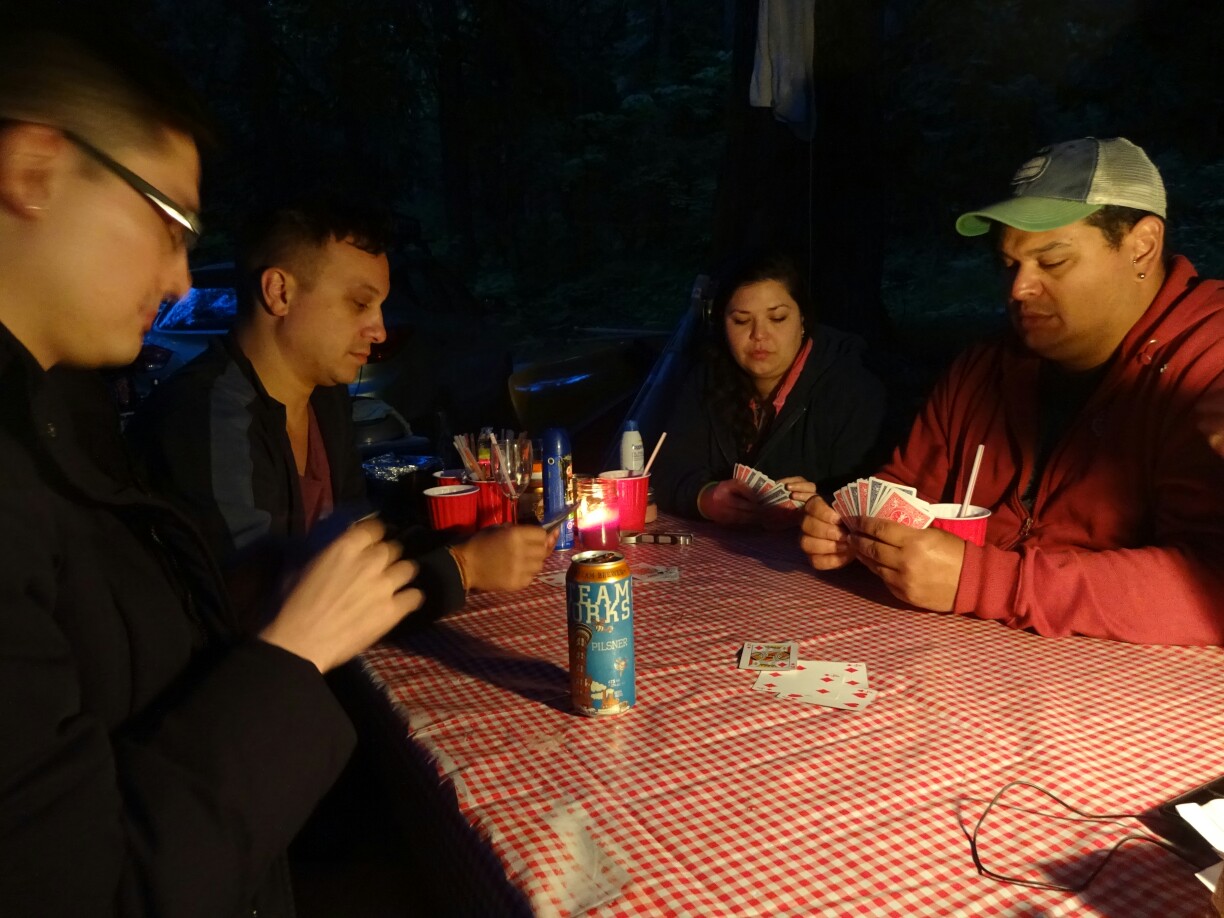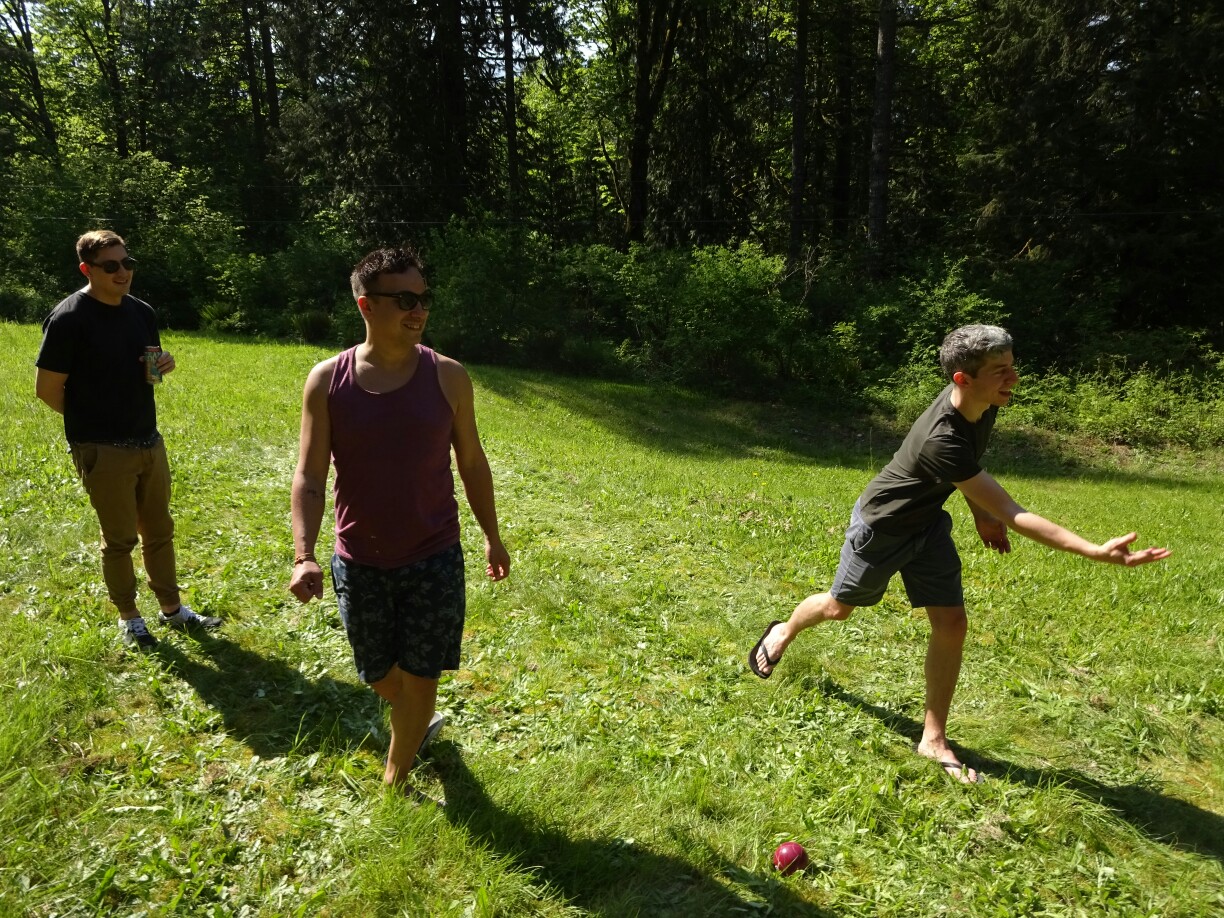After our night at the “Eagle Beach”, we managed to take down our tents during a short dry period. With everything packed up and ready to go, we continued our hike to the “Nitinaht Narrows”. The trail was becoming muddier and we encountered first signs of bears, who had decided to place their poop in the middle of the trail. A little later we had to climb over massive slippery root systems to reach the bank of this silent, but strong current.


Perry the ferryman came over to pick up Heather, Luke and me. He had good news for us, as the weather forecast was predicting nice weather for the next few days. This would be very helpful for conquering the large ladders and mud holes that were yet to come. On the other side we met Harold and Susan again, who had left camp before us and were now celebrating Susan’s birthday with the delicacies of the “Crab Shack”.


As it was still early in the day, Heather, Luke and I decided to continue walking. We were able to make good mileage on the next section, which consisted of newly built boardwalks. After a nice picnic at “Cheewhat River”, we followed the beautiful beach, where camping is forbidden to an abundance of wildlife in the area. However, we saw neither bear nor cougar, but I’m sure they were watching us, well hidden in the dense forest.


At “Cribs Creek” (km 42) we decided to set up camp between the mounds of driftwood. It wasn’t long before Harold and Susan reached the camp and shortly after, Sarah, Lisa and Mel also arrived. Everyone was quite tired from the long day and nobody wanted to move more than necessary, so the tents ended up being spread out with several campfires going. Everyone wanted to dry the damp clothing and warm up before heading to bed.

The following day we continued along the beach towards the “Carmanah Lighthouse”. I was the first one of our little group to leave the campsite. As I was walking down the beach, I saw a sudden movement between the rocks. It was a small, chocolate brown river otter that was searching for food in the intertidal zone. Very happy with this sighting, I started the ascend of the steep ladders up to the lighthouse.
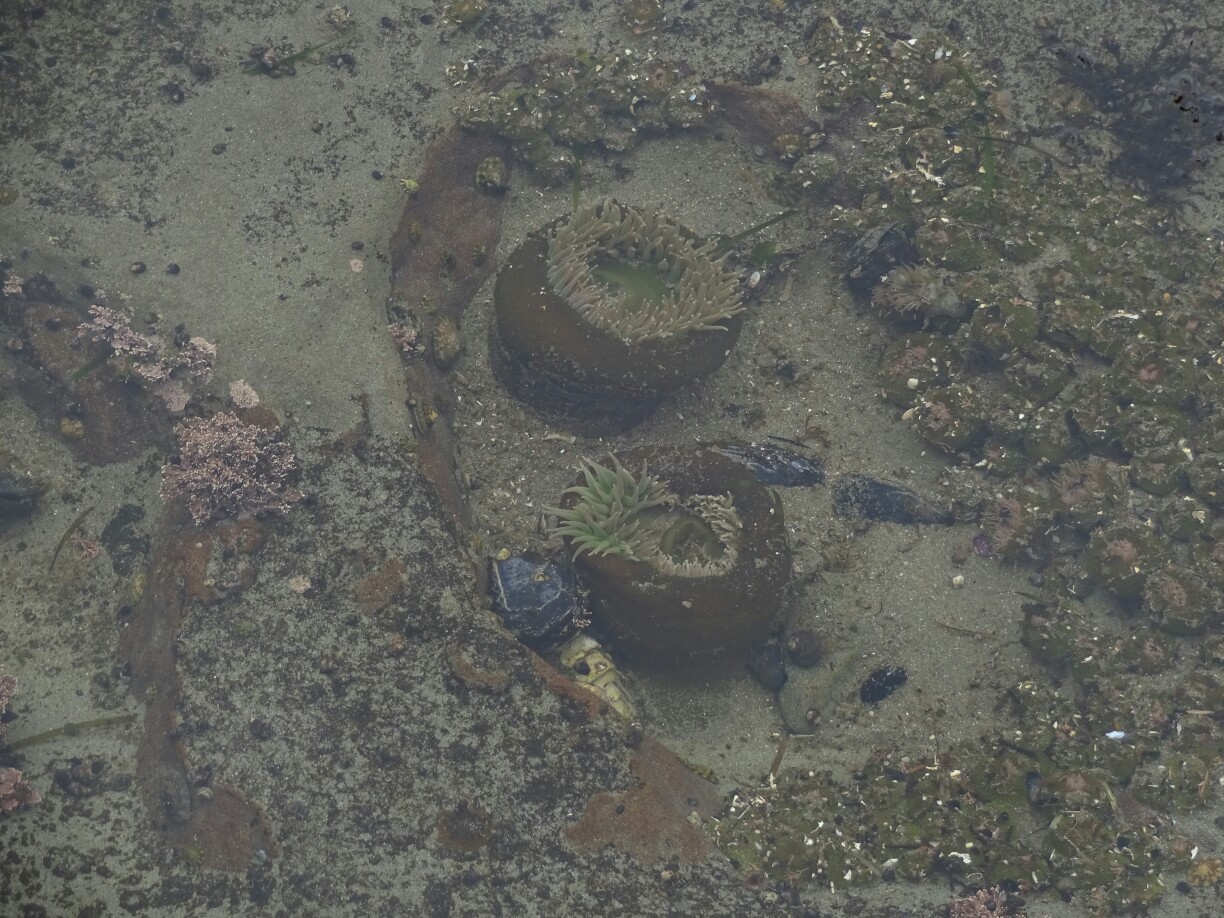

By the time I had reached the top, a slight drizzle had picked up. Therefore, I just had a quick look around. After admiring the views and the enormous whale skeleton, I headed back down to the next beach, where I sought refuge at “Chez Monique”. This is a well known stop among the hikers of the “West Coast Trail”, where Monique and her family serve delicious burgers and other long desired treats in their walk-in tent with plastic tables and sand floor.


After everyone had caught up with me and enjoyed the pleasures of this eatery, I joined Sarah, Mel and Lisa for the next section of the trail. With the picturesque lighthouse still in view for a long time, we followed the rocky shores past “Bonilla Point” and all the way to “Walbran Creek” (km 53), where a beautiful campsite was waiting for us on the other side of the river. Instead of using the cable car, we put on our sandals and waded through the rapidly flowing water.


We spent the rest of the evening cooking, drinking tea and enjoying the nice sunset, which seemed to fulfill the promise of better weather. Unfortunately, I forgot my chocolate brownies that I had bought at “Chez Monique” in front of my tent. But instead of foraging bears it were the mice that found my food immediately, eating up my treat that I had saved for the following day. What a shame!


Harold and Susan had met their goal and were the first ones to leave the next day. I followed about an hour later on my own, since the others were not quite ready yet. The first five minutes on the trail already gave a good overview of what was waiting for us that day: Mud and ladders. However, after the first hour it seemed like I had made a good distance, so I sat down to eat the chocolates that I had gotten from Sarah this morning. Afterwards I must have been so relaxed that I didn’t pay enough attention and slipped on a wet log. The next moment I was sitting in the mud that I had been trying to avoid.

Despite being covered in mud, I was still feeling fine. My shoulder was hurting a bit, but I rested a few more minutes and then put my backpack back on and continued. At the long ladders that led down to the suspension bridge across “Logan Creek”, I realized that I could not really put weight on my left arm. Somehow I still managed to get across and was quite happy to see Harold and Susan on the other side of the cable car at “Cullite Creek” (km 58), who helped me to come across.


After an extended lunch break we decided that it was best for me to wait for Mel, who happened to be a nurse. Soon enough they reached us and she had a look at my shoulder. A bit disappointed, I accepted her diagnosis of a possibly cracked clavicle and decided to stay in place, while sending out my emergency paper with Harold, as there was no cellphone reception available. He would drop it at the next guard cabin at “Camper Creek”, another four hours away.

Luckily there was an official campsite at “Cullite Creek”. What was even better, was the fact that Sarah, Mel and Lisa had planned to stay there anyways. Soon it was clear that my rescue boat was not going to arrive before the next day, so we set up camp. Later, a group of eight men (all from BC) joined our campfire and cooked salami and cheese on flat rocks next to the fire, which somehow worked much better than our attempts of pancake “on the rocks”. As the evening progressed, the ongoing conversation quickly turned from old jokes to physical and philosophical discussion about space and the origin of the earth. There could have been worse places to end this trip!

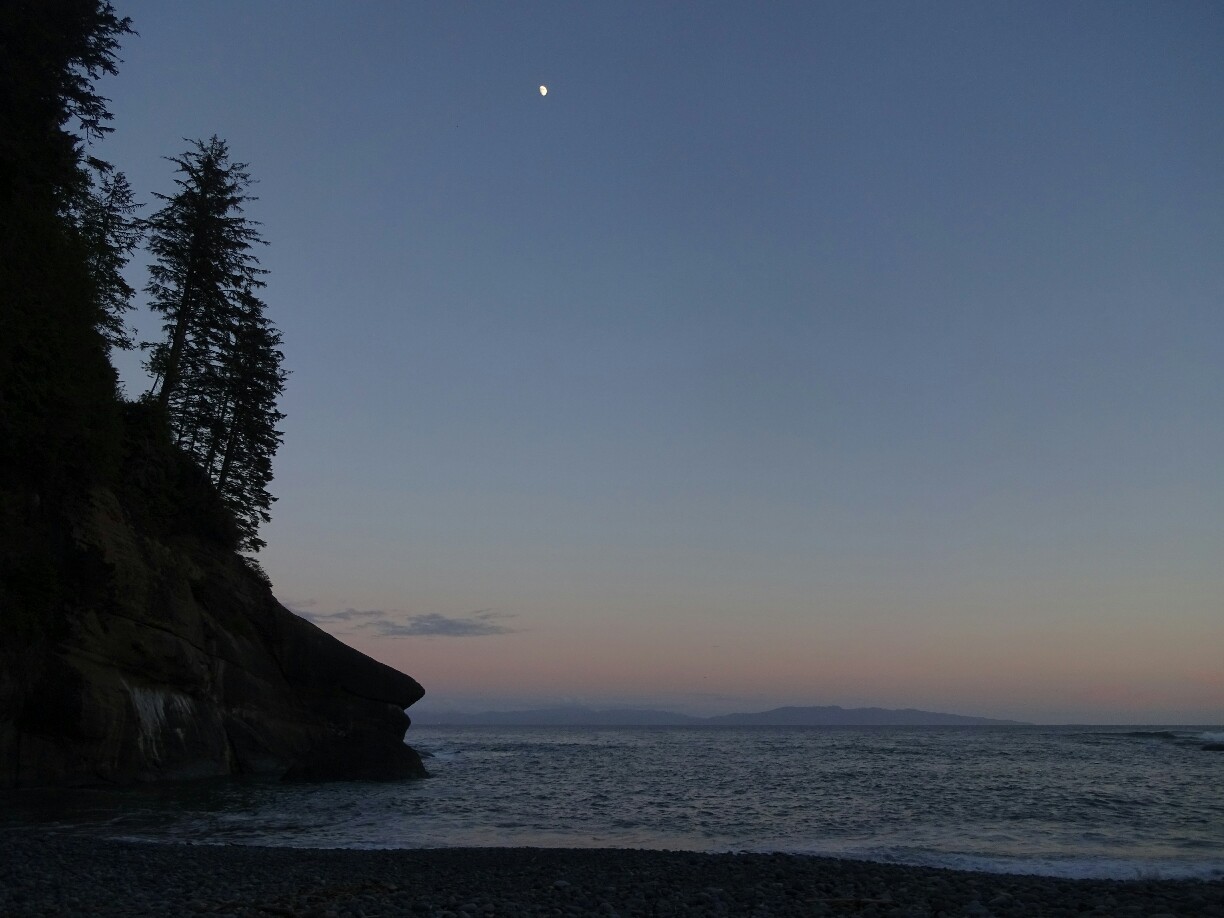
After everyone had left the camp, I slowly packed my backpack and sat down at the beach to wait for help. Several boats and a helicopter passed by my cove, but none of them seemed to have any interest in me. The day progressed and I was wondering, if the promise of help within 24 hours would hold true. But sure enough, eventually a zodiac boat came to pick me up after a quick check-up. They brought me to the southern end of the trail, where I changed to an ambulance that took me straight back to the hospital in Victoria for some x-ray pictures.






